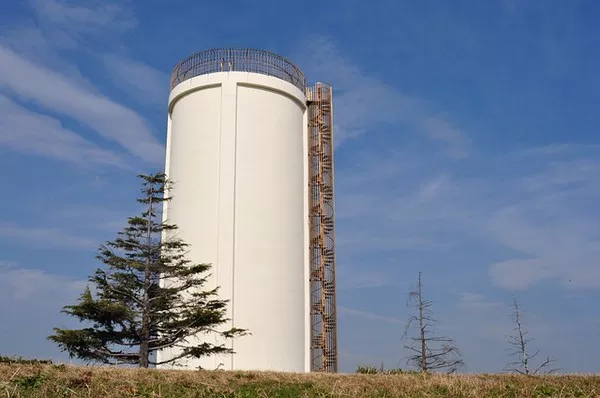In modern society, the management of wastewater is a critical aspect of sustainable development and environmental stewardship. As populations grow and water resources become increasingly strained, the treatment and reuse of wastewater have become essential practices in ensuring water security and ecological balance. However, understanding what happens to treated wastewater once it leaves treatment facilities involves a complex journey that encompasses various stages of treatment, regulation, and potential reuse. This article delves into the intricate process of treating wastewater and explores what happens to it afterward, highlighting its significance in addressing contemporary water challenges.
Wastewater Treatment: The Initial Phase
The journey of treated wastewater begins at wastewater treatment plants (WWTPs), where raw sewage undergoes a series of rigorous treatment processes to remove contaminants and pathogens. This primary treatment typically involves physical processes such as screening and settling to remove large debris and suspended solids. Subsequently, secondary treatment employs biological processes where microorganisms break down organic matter present in the sewage. Advanced treatment methods like tertiary treatment may also be employed to further remove nutrients, pathogens, and trace contaminants.
The outcome of these treatment processes is effluent that meets specific water quality standards set by regulatory bodies. Treated wastewater, or effluent, is now ready for its next phase in the journey.
Regulatory Oversight and Quality Assurance
Before being discharged into water bodies or reused, treated wastewater must meet stringent regulatory standards to ensure it poses no harm to public health or the environment. Regulatory agencies, such as the Environmental Protection Agency (EPA) in the United States or similar bodies worldwide, establish and enforce effluent quality guidelines. These guidelines dictate acceptable levels of parameters such as biochemical oxygen demand (BOD), total suspended solids (TSS), nitrogen, and phosphorus concentrations.
Wastewater treatment plants routinely monitor effluent quality through sampling and analysis to verify compliance with regulatory standards. This monitoring ensures that the treated wastewater is safe for its intended disposal or reuse purposes.
Discharge into Water Bodies
One common pathway for treated wastewater is its discharge into receiving water bodies, such as rivers, lakes, or oceans. This method of effluent disposal, known as direct discharge, can be regulated to protect water quality and aquatic ecosystems. Regulatory agencies impose limits on the volume and quality of effluent discharged to prevent adverse impacts on water resources and aquatic life.
Before discharge, treated wastewater undergoes final disinfection to eliminate any remaining pathogens. Chlorination, ultraviolet (UV) radiation, or other disinfection methods are employed to ensure that the effluent poses minimal risk to public health upon entering water bodies.
Environmental Impact and Dilution
Once discharged, the fate of treated wastewater in water bodies largely depends on dilution and natural processes. Dilution occurs as effluent mixes with the receiving water, dispersing its constituents over a larger volume. Natural processes like sedimentation, biological degradation, and photolysis further reduce the concentration of pollutants in the water column.
Despite these natural mechanisms, discharged effluent can still introduce nutrients like nitrogen and phosphorus into aquatic ecosystems, potentially leading to eutrophication—a process characterized by excessive algae growth and oxygen depletion. To mitigate these impacts, regulatory agencies may impose effluent limits and conduct environmental monitoring to assess water quality and ecosystem health.
Wastewater Reuse: Closing the Loop
In addition to discharge into water bodies, treated wastewater increasingly serves as a valuable resource for various non-potable and even potable applications through wastewater reuse initiatives. Reclaimed water from WWTPs undergoes further treatment to meet the specific quality requirements of its intended use.
Non-Potable Reuse:
Non-potable reuse involves utilizing treated wastewater for activities that do not require drinking water quality, such as landscape irrigation, industrial processes, and toilet flushing. Reclaimed water is distributed through separate networks or onsite storage systems to minimize contact with humans.
Potable Reuse:
Potable reuse, or water recycling, takes treated wastewater through advanced purification processes to produce water suitable for drinking. These processes often include reverse osmosis, advanced oxidation, and UV disinfection to ensure that the water meets or exceeds drinking water standards.
Potable reuse projects are gaining traction globally as communities seek to diversify their water supplies and enhance water resilience in the face of climate change and population growth.
See Also What Defines a Type 3 Septic System? A Comprehensive Guide
Conclusion: Advancing Wastewater Management
The journey of treated wastewater encapsulates a multi-faceted approach to water management that underscores the interconnectedness of environmental, societal, and economic factors. From stringent treatment protocols to regulatory oversight and innovative reuse strategies, the management of wastewater plays a pivotal role in shaping water sustainability.
Looking ahead, continued advancements in wastewater treatment technologies, coupled with robust regulatory frameworks and community engagement, will be essential in optimizing the reuse and disposal of treated wastewater. By embracing a holistic approach to wastewater management, societies can safeguard water resources, protect ecosystems, and promote resilience in the face of evolving water challenges.
In summary, the journey of treated wastewater is not merely a technical process but a testament to human ingenuity and our collective responsibility to steward our planet’s most precious resource—water.

